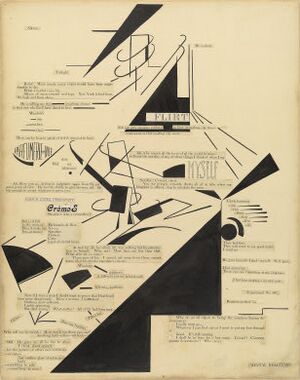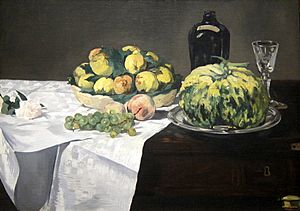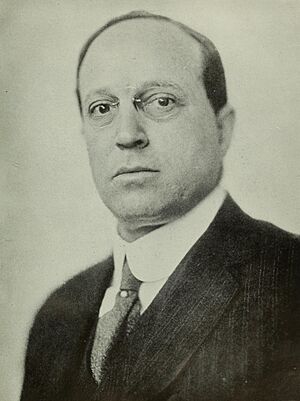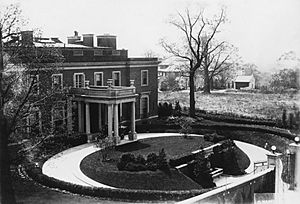Agnes E. Meyer facts for kids
Quick facts for kids
Agnes E. Meyer
|
|
|---|---|
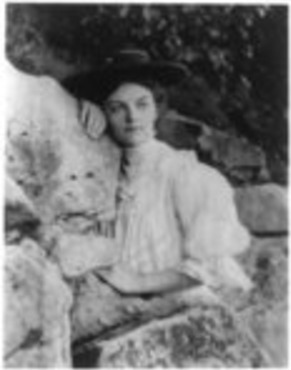
Meyer, probably before 1910
|
|
| Born |
Agnes Elizabeth Ernst
January 2, 1887 New York City, U.S.
|
| Died | September 1, 1970 (aged 83) Mount Kisco, New York, U.S.
|
| Education | Sorbonne University |
| Alma mater | Barnard College, Columbia University |
| Occupation | Journalist, civil rights activist |
| Spouse(s) | |
| Children | 5, including Florence Meyer and Katharine Graham |
Agnes Elizabeth Ernst Meyer (born January 2, 1887 – died September 1, 1970) was an American journalist and a strong supporter of civil rights. She also loved and supported the arts. Agnes Meyer was connected with many smart people, artists, and writers from all over the world.
Her marriage to Eugene Meyer, a wealthy businessman, gave her the chance to influence important national decisions. She helped create social welfare programs. Meyer worked hard to get the U.S. government to provide money for education to states. She also pushed for the creation of the Department of Health, Education and Welfare.
President Lyndon B. Johnson said Meyer helped build public support for the Elementary and Secondary Education Act of 1965. This law was important because it gave federal money to schools that helped children from low-income families. Agnes Meyer believed everyone should have equal chances for jobs and education, no matter their race. Her journalism showed how unfair racial segregation was in schools around Washington D.C.
When her family bought The Washington Post newspaper in 1933, it gave them a way to influence American opinions for many years. Her daughter, Katharine Graham, later led the newspaper during the famous Watergate Investigation. This investigation eventually led to President Richard Nixon resigning. The newspaper even won a Pulitzer Prize for its work. During Senator Joseph McCarthy's anti-Communist efforts in the 1950s, Meyer gave speeches saying his actions threatened academic freedom.
Meyer was also a big supporter of the arts. She and her husband gave many famous paintings and sculptures to the National Gallery of Art in Washington. These included works by Paul Cézanne, Édouard Manet, Constantin Brâncuși, and John Marin.
Contents
Growing Up and School
Agnes Meyer was born on January 2, 1887, in New York City. Her parents, Frederic and Lucy Ernst, were German immigrants. When she was a girl, her family moved to Pelham Heights, a small village that is now part of Pelham, N.Y.. Later, they moved back to the city, where Agnes went to Morris High School.
Agnes had different ideas than her father about her future. She went to Barnard College even though her father didn't want her to. She paid for her tuition with a scholarship and part-time jobs. At Barnard, she started making friends with smart people who would be important throughout her life. She was very interested in education and philosophy. This led her to study with Columbia professor John Dewey, who greatly influenced public education in America.
While at Barnard, Agnes met her future husband, Eugene Meyer. He was 11 years older than her. Agnes graduated in 1907. She then continued her studies in Paris at the Sorbonne in 1908–09. There, she met famous artists like Edward Steichen, Auguste Rodin, Constantin Brâncuși, and Gertrude Stein.
Her Work and Impact
Journalist and Public Speaker
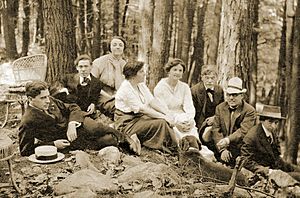
Soon after graduating from Barnard, Meyer became one of the first women journalists at the New York Sun newspaper. She was part of a group of artists around Alfred Stieglitz.
In 1915–1916, she helped create and publish an art magazine called 291. One issue featured her poem Mental Reactions, which was an early example of visual poetry in America. Her poem's words were cut out and spread across the page.
In 1933, her husband, Eugene Meyer, bought the struggling Washington Post newspaper. Agnes often wrote articles for the Post. She focused on important issues like the problems faced by veterans, migrant workers, overcrowded schools, and African Americans. After World War II, she wrote her autobiography, Out of These Roots: The Autobiography of An American Woman.
In 1945, she wrote a series of articles for the Post called "Orderly Revolution." These articles praised a young community organizer named Saul Alinsky.
During the 1950s, Senator Joseph McCarthy led a campaign against people he thought were Communists. Meyer gave speeches saying this campaign was a danger to academic freedom. She spoke at a convention in Atlantic City, New Jersey, calling his actions an insult to free people. She argued that freedom was more important than just being safe. However, her views on women's roles were more traditional. She wrote that a woman's most important job was being a housewife and mother.
Meyer's investigative journalism showed the unfairness of racial segregation in schools around Washington D.C. President Lyndon B. Johnson said Meyer helped build public support for the Elementary and Secondary Education Act of 1965. This law helped schools that served children from low-income families.
Civil Rights Advocate
Meyer worked hard for public schools to be integrated, meaning students of all races could attend together. She also pushed for an end to racial discrimination in jobs. Meyer supported the creation of the Department of Health, Education and Welfare. She also wanted the U.S. government to give money to states for education. Lyndon B. Johnson said she had the most influence on his education policies.
In 1956, Agnes E. Meyer spoke to the National Council of Negro Women in Washington D.C. Throughout the 1960s, she continued to work on improving public education. She helped create and support several non-profit organizations focused on this goal.
Helping Others (Philanthropy)
In 1944, Agnes and her husband created the Eugene and Agnes E. Meyer Foundation. This foundation provides money for community activities, especially those that improve public education.
In 1958, Meyer and her husband also started the Agnes and Eugene Meyer Fund. This fund supports professors at her old college, Barnard College, and provides money to the New School for Social Research. The next year, she started the Urban Service Corps. This program offered mentoring to school children in Washington D.C. In 1960, Meyer founded the National Committee for the Support of the Public Schools. She was the chairwoman of this committee until her death.
Supporting the Arts
Meyer met Charles Lang Freer, a collector of art, in 1913. Over the years, they studied and collected Chinese and other Asian art together. When Freer died before the Freer Gallery of Art was finished, Meyer and her husband helped make the final decisions for the gallery. The Eugene and Agnes E. Meyer Auditorium at the gallery is named after them.
The Meyer family gave many important artworks to the National Gallery of Art. These included paintings by Paul Cézanne and Édouard Manet, sculptures by Constantin Brâncuși, and watercolors by John Marin.
Her Family Life
Agnes returned to the United States from Paris in 1910. She married Eugene Meyer in a small wedding. At that time, Eugene was a successful investment banker and was very wealthy.
Agnes and Eugene had five children together:
- Florence Meyer (1911–1962) was a photographer.
- Elizabeth Meyer Lorentz (1913–2001) was an author.
- Eugene "Bill" Meyer III (1915–1982) became a doctor and medical professor.
- Katharine Graham (1917–2001) became the publisher of The Washington Post.
- Ruth Meyer (1921–2007).
In 1917, the Meyers moved to Washington, D.C. For the next sixteen years, Eugene held several important jobs in the government, including Chairman of the Federal Reserve (1930–33). The Meyer family lived in the Meridian Hill Park area of Washington. They later bought a property on Crescent Place, which is now known as the White-Meyer House. This house is listed on the National Register of Historic Places.
In 1919, the Meyers built a large mansion on the Seven Springs Farm in Westchester County, New York. The house had over 60 rooms, including 15 bedrooms and three pools. The estate overlooked Byram Lake.
Meyer was also the chairwoman of the Westchester County Recreation Commission for eighteen years (1923–1941).
She had a long friendship with the famous writer Thomas Mann. She helped him have an active social life when he was living in the United States. She also helped him get a job as a lecturer at Princeton University in 1938.
Her Death and Legacy
Agnes Meyer passed away from cancer at Seven Springs Farm when she was 83 years old.
During her life, Meyer received 14 honorary degrees. She also received awards from groups like the Women's National Press Club, the National Association for the Advancement of Colored People (NAACP), and the AFL-CIO. After Meyer's death, the Eugene and Agnes E. Meyer Foundation gave the Seven Springs Estate to Yale University. It later became a non-profit conference center. In 1984, the property went to Rockefeller University, which also used it as a conference center.
The Washington Post newspaper created the Agnes Meyer Outstanding Teacher Award in 1983. This award recognizes excellent teachers. More than 500 teachers in the Washington area have received this honor in her name.
The Library of Congress keeps the Agnes Elizabeth Ernst Meyer Papers. These papers include her diaries, letters with family and friends, and records of her work as an author and social activist. They also have her speeches and an unpublished memoir.
Images for kids
See Also
- List of artwork associated with Agnes E. Meyer


